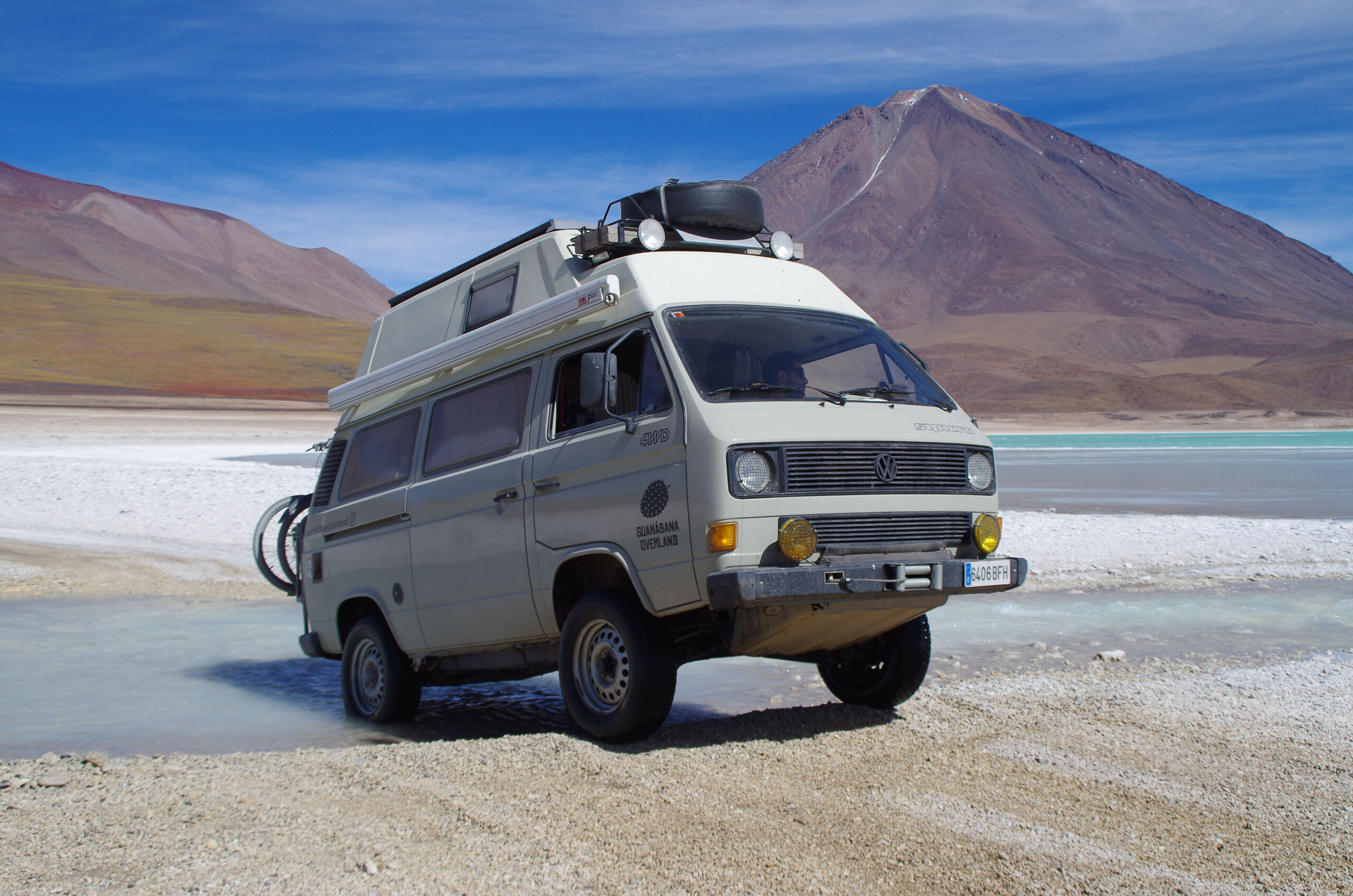Some of you will know that I ordinarily live (pre-Covid) full-time in my 1986 Volkswagen T3 Syncro and thus have a soft spot for this iconic classic. I follow hundreds of 2WD Vanagons and Syncros online and frequently contribute to the various Volkswagen forums. There are simply thousands of incredible rigs out there, as diverse and unique as the owners that drive them. However, whilst these vans have a cult-like following within the vanlife community, they’re generally not the vehicle of choice for serious overlanders. Consequently, when I stumble upon a Syncro that’s utilized for hardcore overland trips and has been engineered for dependable functionality rather than looking pretty, I get very excited. Hence, without further ado, meet Pedro and Lorena, also known as “Guanabana Overland,” and a couple who have proven without a doubt that the Volkswagen T3 Syncro is more than just a thumbnail.
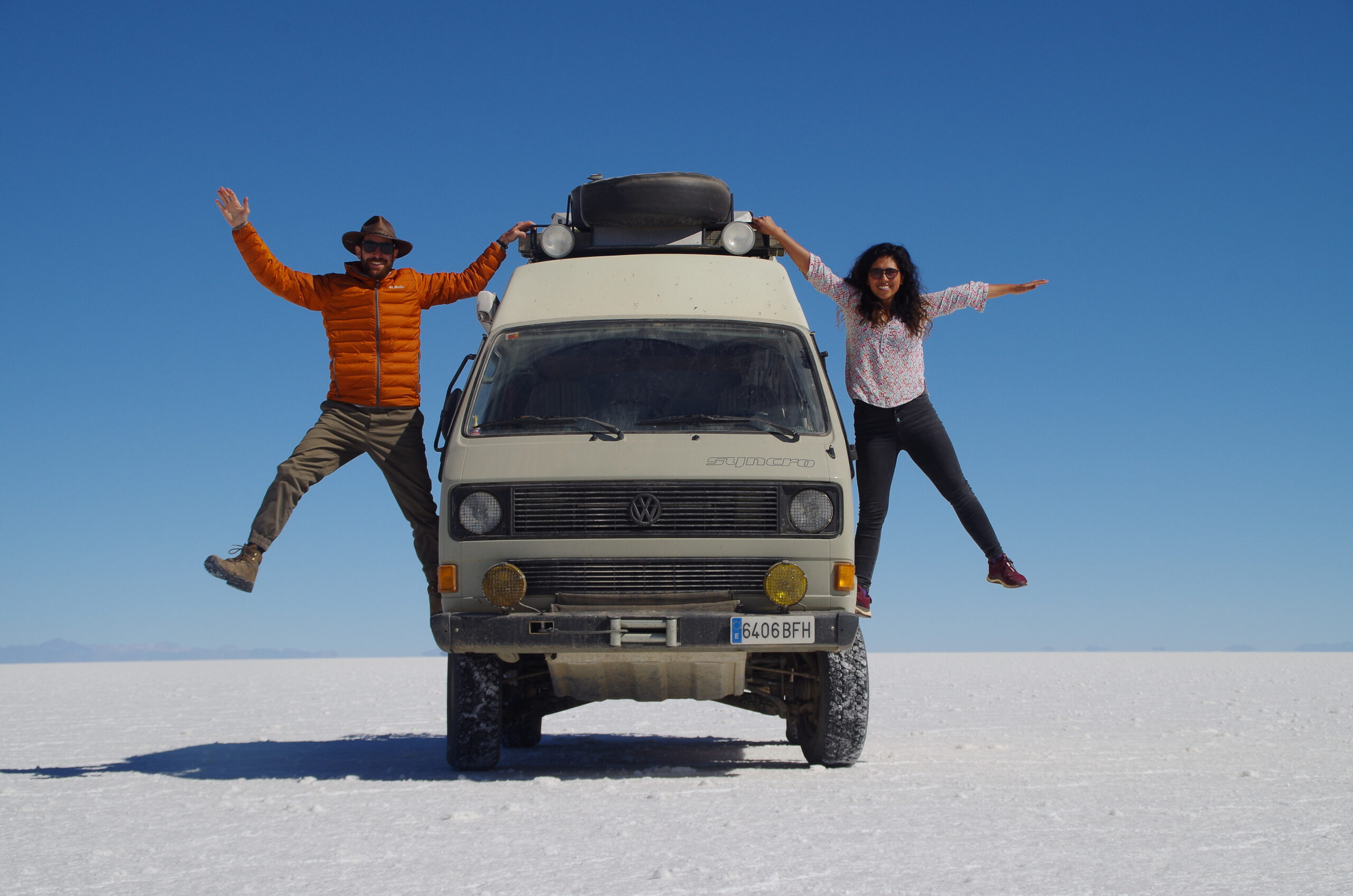
In 2019, Pedro and Lorena shipped their Syncro to South America with the intention of spending two years driving from Patagonia to Alaska. I was following along, inspired by the couple’s story, photography, and their insatiable hunger for the road less travelled. Covid caught up with them in Colombia, putting the brakes on their journey, but not before an already life-changing experience. I caught up with Pedro, one half of “Guanabana Overland,” who shared stories from the road and provided a fascinating overview of why the Syncro is underrated for serious overland travel.
![]()
![]()
Introduction
We’re both chemical engineers and quit our jobs just before our trip to South America. We are currently living back in Madrid; I’m working on clean energy research and development. When we started the trip, there were just two of us, but we returned as a family of three. Our baby was born exactly two years after we hit the road in Uruguay. We’re currently configuring the Syncro for our new crew member.
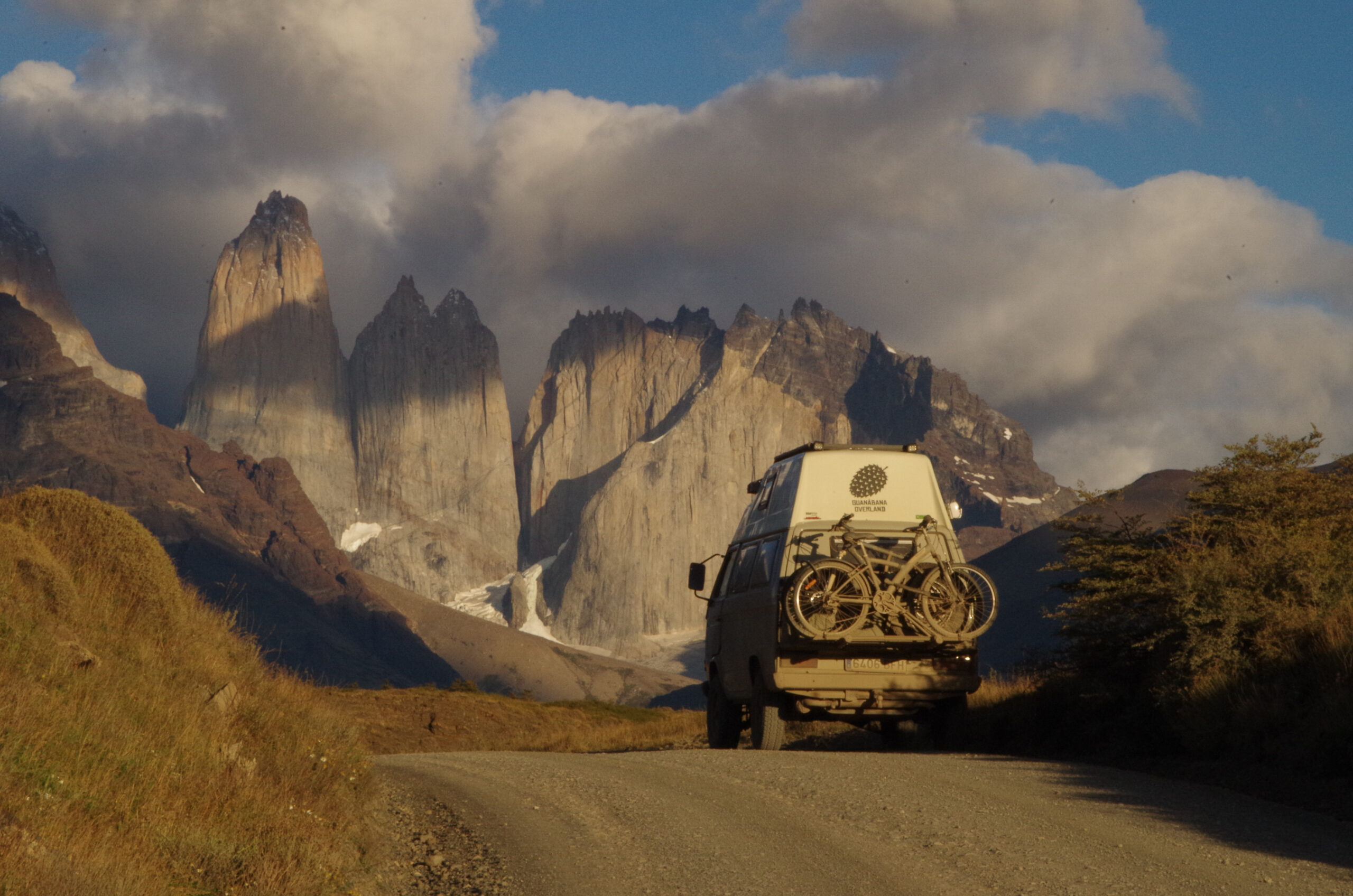
When did your love of overland travel begin?
It all began as a result of family holidays as a kid in our old SEAT with a rooftop tent (the rooftop tent was very basic; handmade in Portugal). Although my parents weren’t hugely into camping, it was these trips that sparked my love of vehicle adventures. Since then, I’ve travelled in many ways, including on foot, bicycle, motorbike, car, and van.

The Build
I bought my first van 18 years ago, I was a student with little money, and a bargain T3 was available for 700 euros. At that time, I had no idea what it was, but I went to see it and immediately fell in love. It was a two-wheel-drive air-cooled high-top; I owned it for eight years, restoring the interior and fitting a bigger engine. However, I have always loved four-wheel-drive vehicles, so the next logical step was the Syncro, the four-wheel-drive T3. The best thing about the Syncro is that it’s a great equilibrium between external size and interior room. Ultimately, you have a generous full-time living space for two people in a vehicle which is externally no longer than most family cars. A compact vehicle is underrated; we all like to assume that overlanding is wide-open spaces, but it often comprises twisty tracks, tricky off-road situations, narrow streets, downtown parking, etc. The Syncro combines on-road comfort with off-road capabilities that are more than adequate for overlanding; after all, you don’t need a rock crawler. Mine has two lockers (front and rear), which have been really useful. It would be cool to have low gears, but the crawler gear is sufficient for most situations. The T3’s relatively short wheelbase is part of its magic and makes it very agile off-road and fun on-road. The independent suspension does have some drawbacks, such as limited travel and reliability issues, particularly problems with CV joints, but these are small trade-offs when you consider the comfort and on-road handling this system provides. It is a little underpowered, and a much bigger engine is not an option due to the stock gearbox tolerances. This is the main drawback. Another cool design feature is having the engine in the rear, which makes it way quieter for long journeys than other period vans, where the engine is mounted in the front or underneath you. It was originally a 1.6 TD engine, but I swapped this for a 1.9 TDI, which would’ve been the logical choice for Volkswagen to use if the T3 had been produced longer. The 1.9Tdi VW engine has a reputation for bombproof reliability, and this was the case on our travels. The new engine has been amazing; it never burns oil and is very dependable. I’d ordinarily look for an engine in a junkyard, but because this one had to be absolutely dependable, I bought a whole car. That way, I could drive it for a few months until I was satisfied it was reliable. It had done only 120,000 kilometres, one owner, just highway miles.
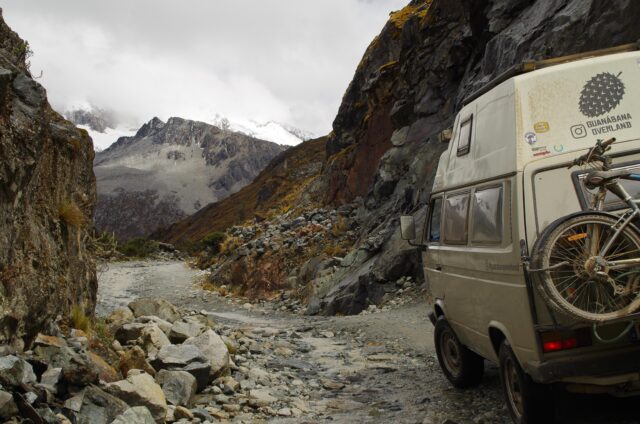
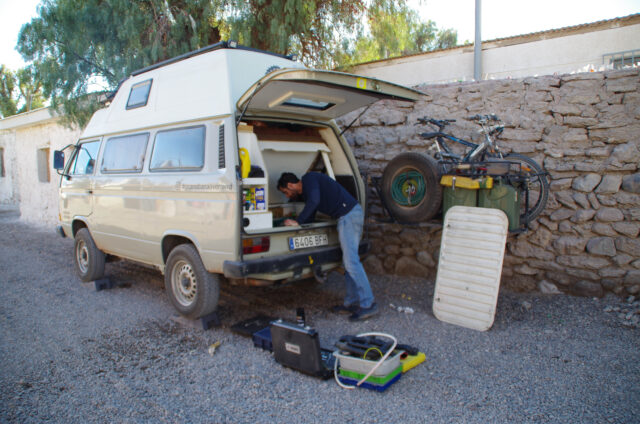
How long did the build take? What was that experience like?
It’s been 10 years of work. I had a very clear idea on what I wanted to do. I didn’t want it to be perfect before we travelled, just functional. Thus, I was able to enjoy the van but do little by little whenever I had the chance. That said, I had objectives, starting with general maintenance, then swapping the engine, bigger wheels, uprated brakes, interior. I didn’t want bigger wheels until I had a bigger engine, and I couldn’t fit larger brakes until I swapped the wheels; thus, everything was a methodical process. I’m currently rebuilding the gearbox; it was ok, but I did it as a preventative measure as it’s way better to rebuild it before it goes wrong. I’d have ideally done this before our South America trip,but it wasn’t possible; that made me nervous, but in the end, it worked perfectly. I always use good oil in the transmission, regularly check the level, and for the most part, I drive very sympathetically, double-clutching all the downshifts.
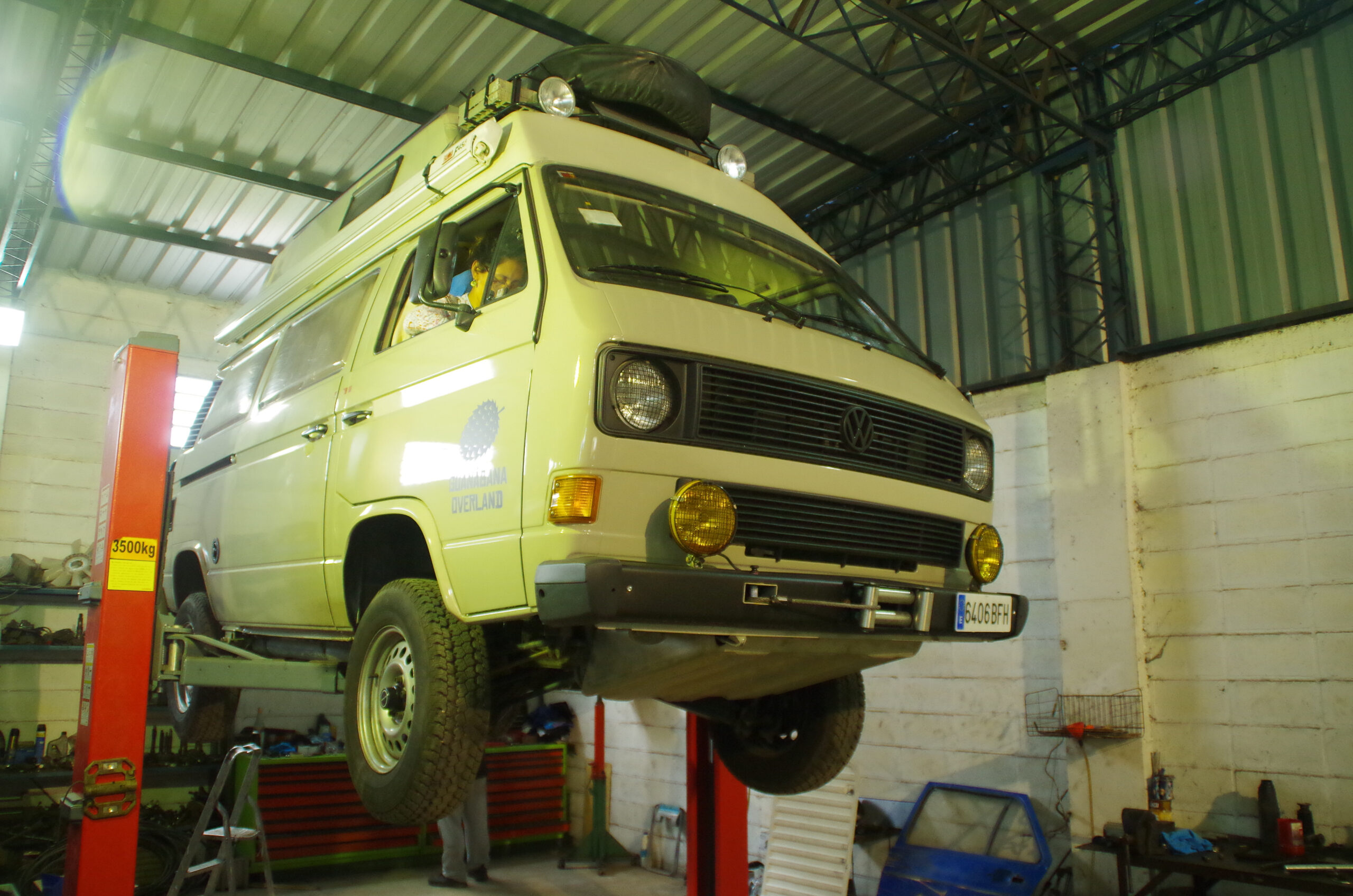
What modifications have you made to the Syncro? What are your favourites?
As discussed, I converted the van to a 1.9Tdi engine. I also fitted Fox shocks, and it’s lifted a little with taller/stronger springs. I didn’t want to go much taller than stock as reliability has always been my top priority, and excessive lift causes problems. I just wanted suspension better suited to the extra weight. The Fox shocks are amazing, although I did have an issue in Portugal where they popped a seal. I sent them for a rebuild in the US, and since then, I’ve had no issues at all, even on some really challenging roads in South America. In terms of my favourite modifications, I’ve not made excessive alterations because I think the stock Syncro is already a very good setup. That said, the engine was a must for me, and the suspension also needed refreshing.
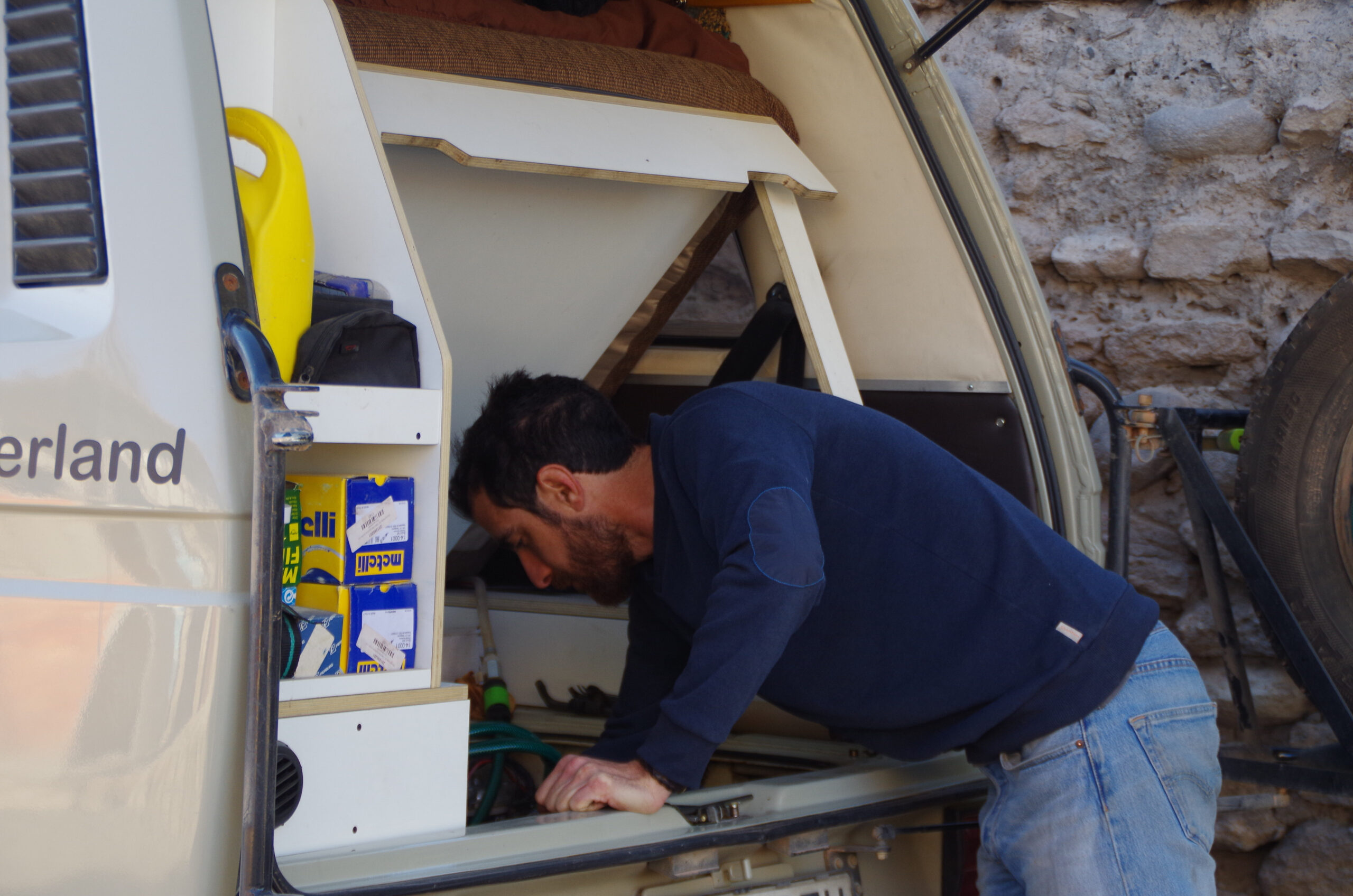
Do you have any additional modifications planned for the future?
I’m currently upgrading the gearbox with made-in-the-usa GT gears. They do a straight-cut option, like in a racing car, and they’re supposed to be superior to stock gears. The company Vantopia, based in Ireland, is working on the gearbox. The engine is currently 90 horsepower, but there are modifications to improve power. First step, tuning the ECU, then upgrading the injectors, and perhaps fitting a variable geometry turbo. I want to improve it, but I don’t want to go crazy with power. It’s always important to consider what your intention with the vehicle is. The requirements for a weekend van and a dedicated long-term overland vehicle are often quite different. If you’re overlanding, speed isn’t that important, but reliability is essential.
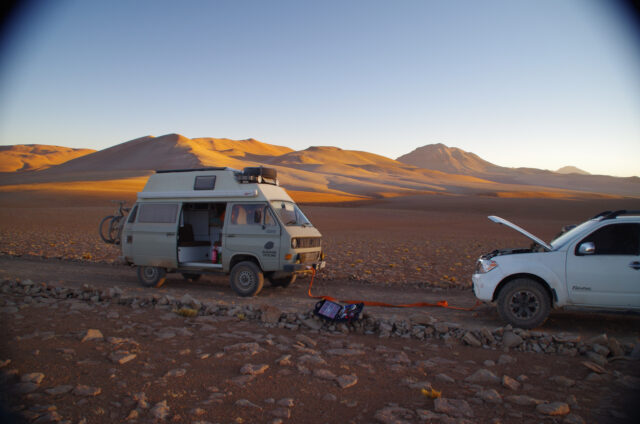
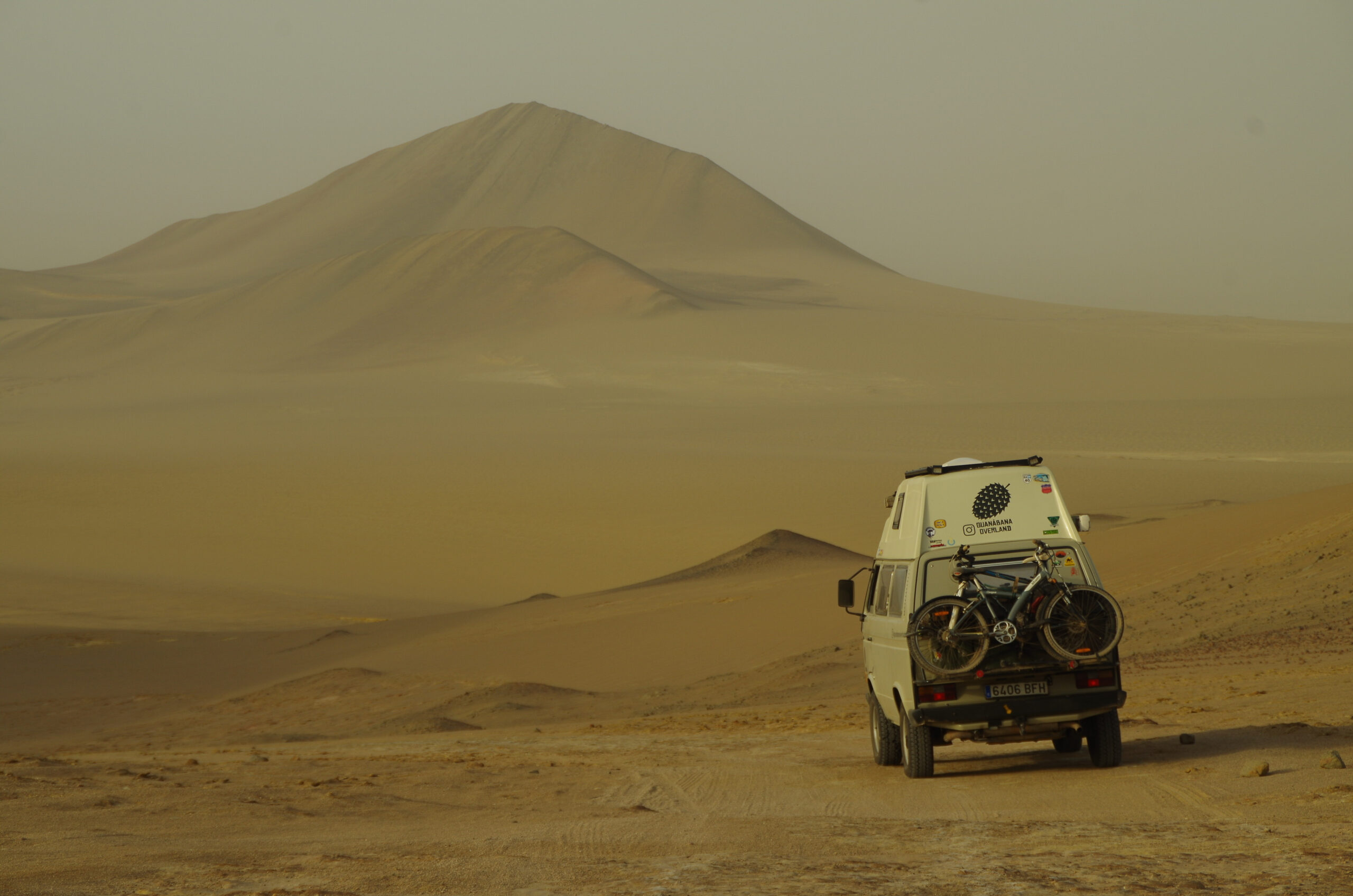
The Camper
The van originally had a Reimo interior. It was ok; I used it for eight years, but before South America, I built everything from scratch. The layout is similar to the classic Westfalia setup, but I fitted an 80-litre compressor fridge and separated the drinking and washing water. Furthermore, I removed the upper bed and fitted drawers instead. There were a lot of smaller details that improved daily life on the road; for example, having bigger cupboard doors, a larger countertop, a Porta Potti, new cushions, etc. It was the small details that made life easier. There were little things with the old setup that frustrated me, and I didn’t want these everyday annoyances for our two-year overland adventure.
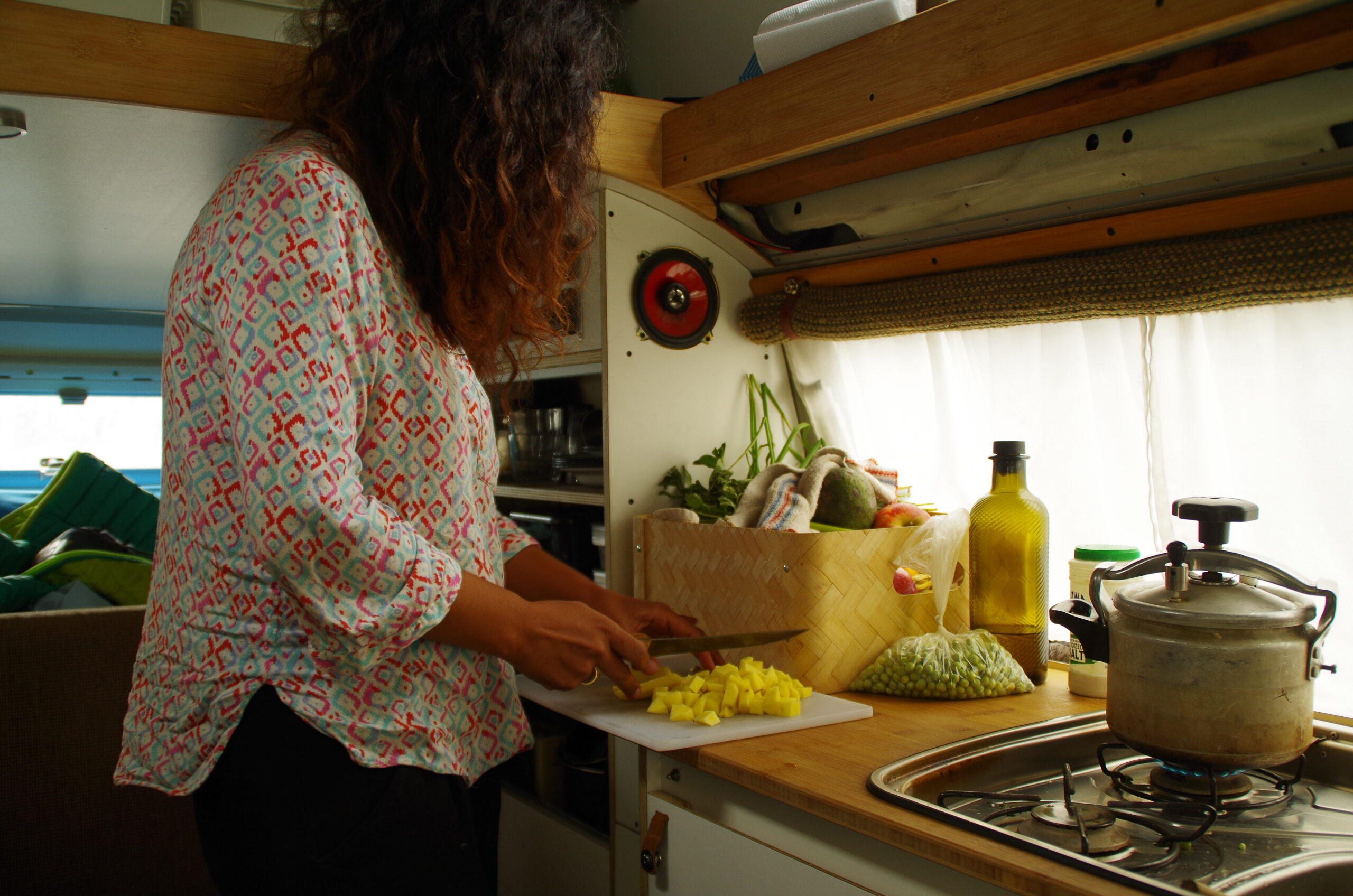
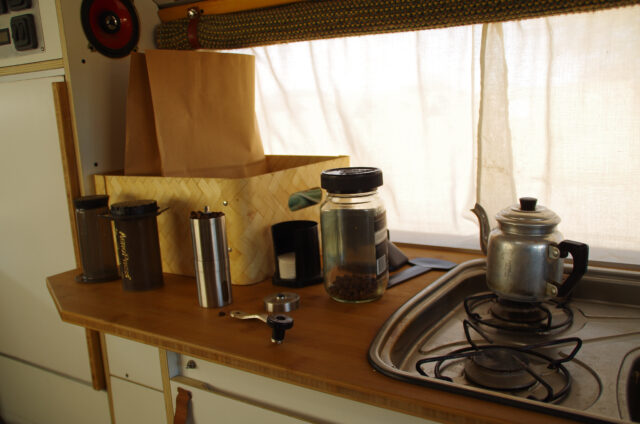

Recovery Gear
I carry the classic lineup: Hi-Lift jack, sand ladders, compressor, D shackles, snatch straps, and a tow strap. The two-piston compressor is permanently wired and is quite powerful; I think it’s a must for overlanding. I also have a winch, which I think is a great addition for piece-of-mind when venturing into the wilderness solo. That said, I wouldn’t say it’s absolutely essential, and unfortunately, it’s heavy, expensive, and fitting it to the vehicle isn’t straightforward.
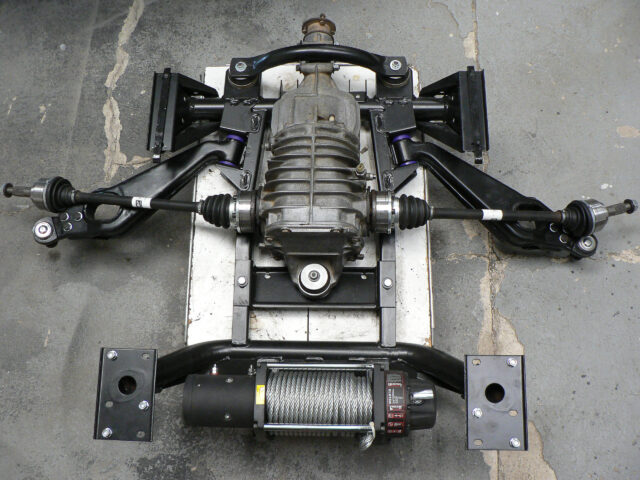
Adventure
Can you tell me about your overlanding trip to South America?
It was planned for two years, starting in Argentina and ending in Alaska. However, the pandemic caught up with us in Colombia after one year, so our trip was cut in half. We stayed for 10 months in Colombia, hoping the pandemic would pass, but eventually, we decided to return to Europe. Nevertheless, it was incredible and one of the best things I’ve done in my life. It’s an experience you can’t compare to anything else, and I have done many vehicle trips to remote destinations before. Other trips have included spending a month exploring Vietnam on a dirt bike, overlanding Oman with a Pathfinder, and driving an L200 around Senegal during the rainy season, but you can’t compare these experiences to living in the van full-time on a trip like this. Previously my adventures were a maximum of one month, but not having a deadline was very different. We travelled approximately 40,000 kilometres (24,850 miles), and around 30 percent were off-road. I was always keen to take the more interesting off-road routes.
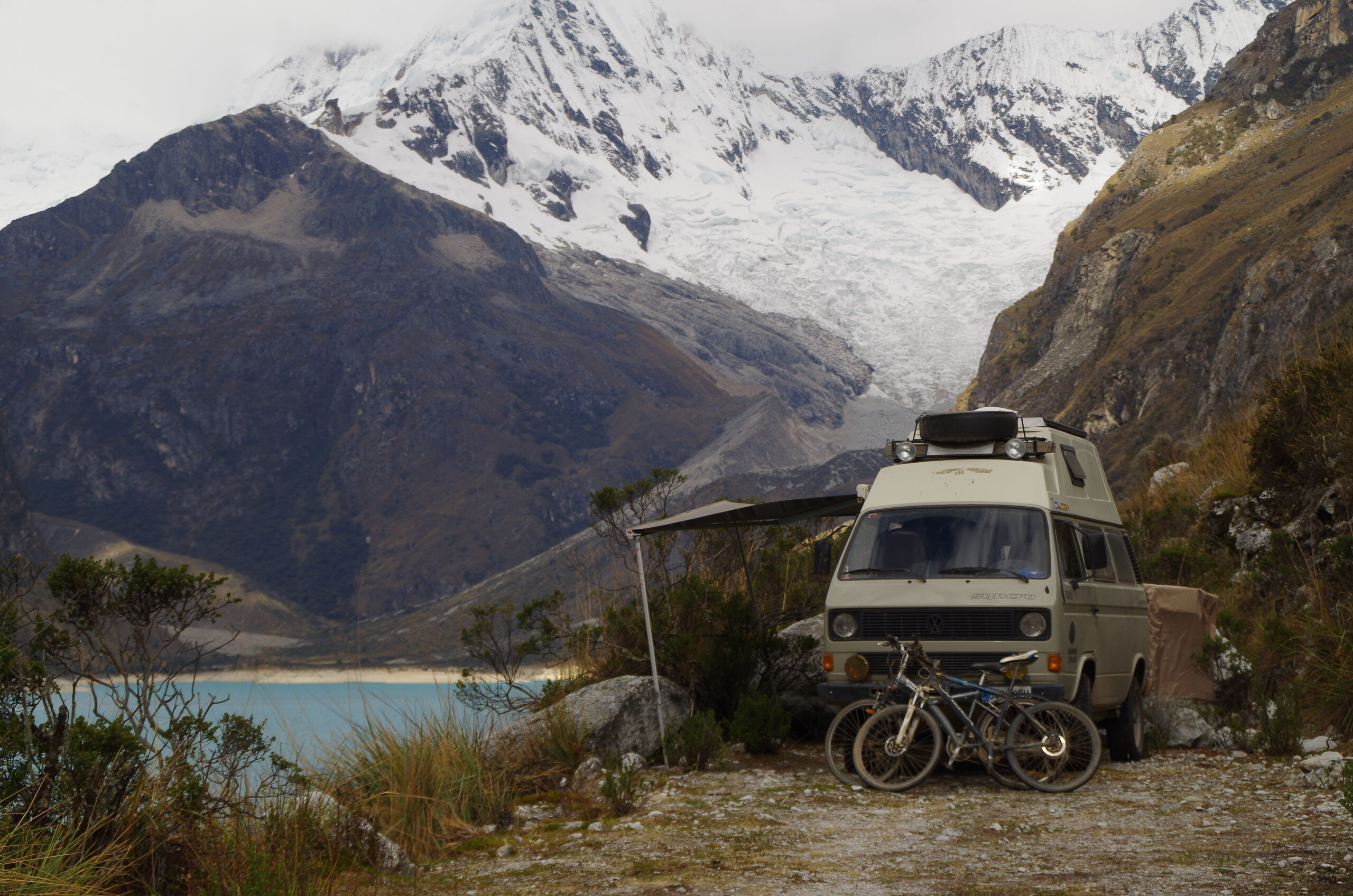
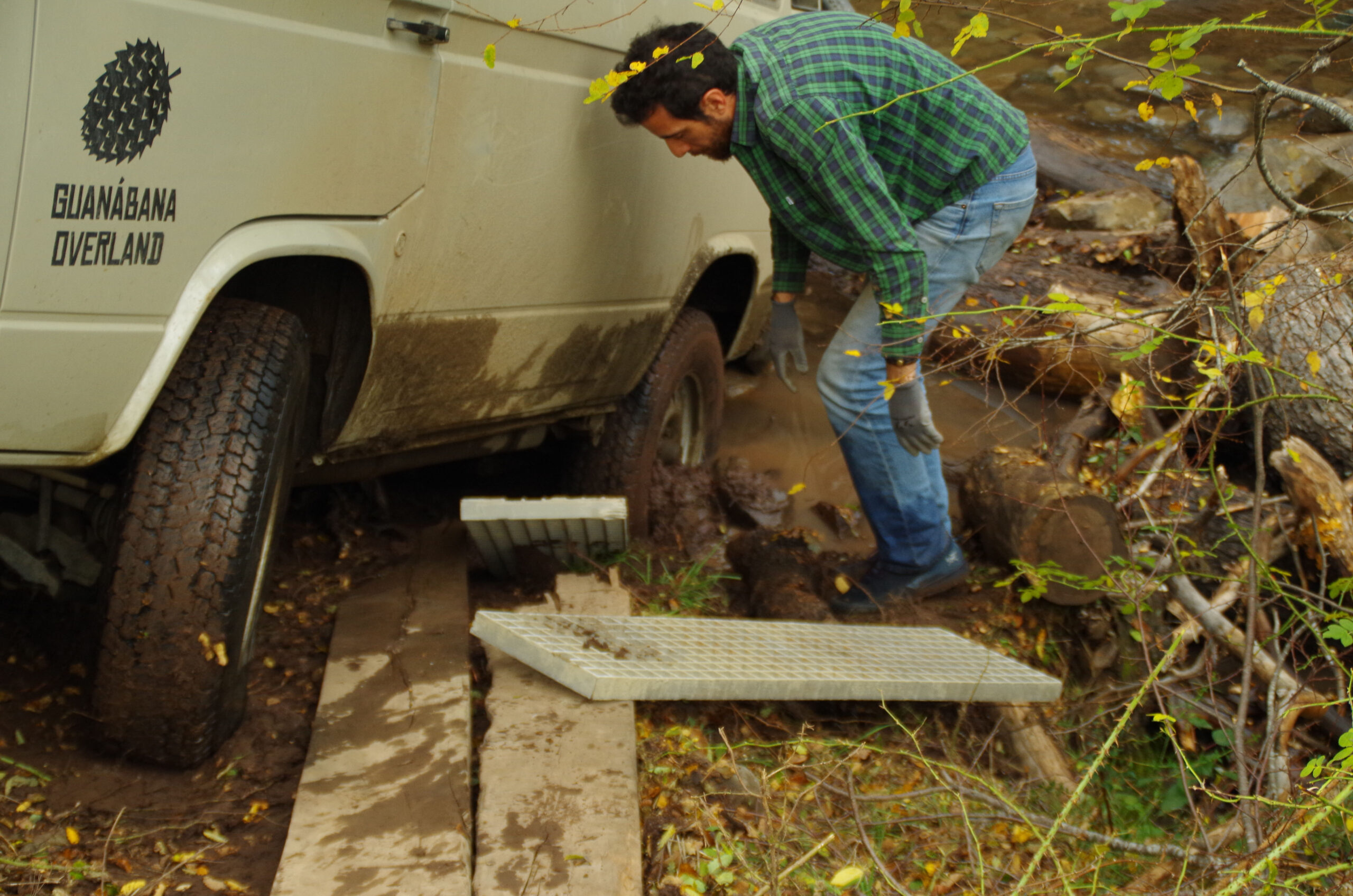
The itinerary was Uruguay, Argentina, south to Patagonia, then north to Chile. We then headed to Northern Argentina, Bolivia, Brazil, back to Bolivia, Peru, Ecuador, and Colombia. We initially planned to spend one night per one/two weeks in a campsite/hotel, but in the end, we realised we didn’t need it and gained nothing from it. Consequently, throughout our adventure, we only used two hotels and no campgrounds at all. Honestly, it was really easy. Before leaving, we were a little fearful. Will we be able to find water and gas? What will the people be like? Will the van be reliable? What will life in the van be like as a couple? In the end, it was all much easier than we thought, and actually more relaxed than our life here in Madrid. Your needs are simplified on the road, and your daily routines become very basic. At no point did we have any safety issues—absolutely zero—and we never had a sense of danger at any point. We parked anywhere in the countryside and villages, but in the big cities, we looked for a parking lot and paid to stay there overnight (it only cost a couple of euros).
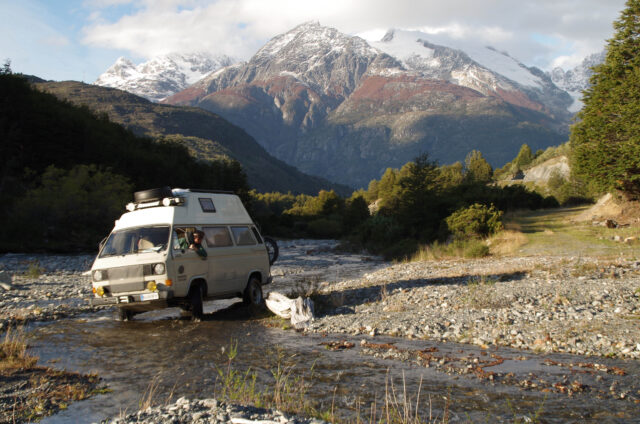
On your trip, was there a particular road/route that stands out as the most challenging?
I think the Lagunas Route in southern Bolivia. This ‘road’ is accessed from Chile or Northern Argentina and is located in southern Bolivia. It is a very high plateau, completely deserted, not even a tree for hundreds of kilometres. You drive between volcanoes, geysers, and many different coloured lagoons: green, red, white, blue, black. The route takes you above 4,000 metres (reaching 5,000 metres in the Argentinian section), and the scenery is very dramatic, but the elevation is challenging. The tracks are very rough, but the main issue is that if something were to go wrong, it’d be very difficult to get help. There are whole days not seeing anyone, no village or road. Nothing. Thus, you have to be very gentle with the vehicle. It was also super cold at night; at one point, it was -15°C (5°F). In the end, everything went smoothly, but beforehand, I was worried about the van’s reliability. That said, a turbo-diesel engine, like ours, is not so problematic at high elevation. It’s worth noting that a modern vehicle can have more issues at this elevation due to the various electronics and sensors; I spent time with a family in a newer Sprinter, and they had many mechanical problems, including filters getting clogged due to lack of oxygen.
Overland Wisdom
Be water, my friend. Overland travel tests your patience and resilience, but it’s also a great opportunity to develop these personal skills. Controlling your expectations is one of the best ways to avoid frustration on a long adventure. Avoid a fixed itinerary and pack light. Above all else, focus on the experience, not the destination. Let this be the mantra you and your crew live by. I’d recommend doing some smaller adventures before committing to a big international trip. Smaller outings will build your skills, identify weaknesses, highlight what you really need, improve your mechanical knowledge, allow you to figure out life on the road as an individual or team, and ultimately build your confidence. Navigation will become a daily routine, so work on driver-co driver communication, carry a paper map, trust the locals, and, again, avoid a fixed itinerary. In terms of mechanicals, you don’t need to be a mechanic or engineer, but try to make an effort to learn about your rig, e.g., how systems work, known weaknesses and how to care for them, what tools and spare parts you need. The vast majority of breakdowns are not major, like a blown head gasket, but instead silly things, like an electrical gremlin or a loose nut that you can fix on the roadside. Take time to choose the best vehicle based on your objectives, skills, experience, and budget, but don’t spend your life looking for the “perfect” overland vehicle because it doesn’t exist. I’d generally recommend opting for the simpler option when considering rigs. Driving a modern vehicle doesn’t remove the risk of mechanical issues. An older vehicle is easier to fix by yourself but also easier for local mechanics to work on. The downside is the performance, and, of course, you want one that’s been well looked after. If you can find an older vehicle that’s well maintained, then, in my opinion, it’s often a better option for overlanding than a modern vehicle. I took a lot of spare parts as the Syncro is not common in South America; neither is my engine. I had new CV joints, engine sensors, ball joints (I did need to replace these during the trip), brake pads, and many other parts. I packed a lot of tools, and because I did much of the mechanical work myself, I knew which specific tools I’d need for the Syncro. I made a list beforehand to ensure if something like a front CV needed changing, I had the correct tools to change it on the road. Ultimately, choose a simple vehicle. I’ve met many people in much older Volkswagen T2s in South America, and they were happy and making it happen. Simplicity is key!

Where can we follow your adventures?
Instagram: guanabanaoverland

![]()
Specifications
1989 VW T3 (Vanagon) Syncro
Power
1.6TD 69hp swapped to 1.9Tdi 90hp
Suspension and Drive
4-wheel independent suspension
Fox monotube gas shocks with reinforced springs
Vented disc brakes (swapped from VW T4)
Factory front and rear lockers, central viscous coupling
Refurbished transaxle with GT straight-cut gears (yet to be tested)
Wheels and Tires
8-ply rating 205/80R16 Goodyear ATS
16’-inch steel Mefro rims
Recovery and Armor
12,000-pound winch bolted to front suspension sub-chassis (custom modification)
Two winch points in front bumper, rear trailer hitch
Hi-Lift jack
40mm GRP sandtracks (suitable for ditch bridge)
Factory snorkel
Accessories
Hardwired 2-piston compressor under rear seat
Fog and high beam lights
80L Waeco CRX80 compressor fridge
Planar 2000-watt diesel heater
2x 100-watt solar panels, Victron MPPT controller
Custom rear carrier for spare wheel, jerry cans, recovery stuff, and two bicycles
Fiamma F45 awning
Fuel Capacity
70-litre factory tank
2 x 20-litre steel jerry cans
1,000-kilometre range
Water Capacity
2 x 70-litre clean water tanks
2 x 15-litre drinking water cans with dedicated pump and tap (easy to carry or refill from clean sources)
Hot water system with custom 10-litre stainless steel tank hosed to engine coolant circuit
Resources
Vantopia – vantopia.ie
Gowesty – gowesty.com
Buschmiede, TK Carparts – tk-carparts.de
Our No Compromise Clause: We carefully screen all contributors to make sure they are independent and impartial. We never have and never will accept advertorial, and we do not allow advertising to influence our product or destination reviews.


